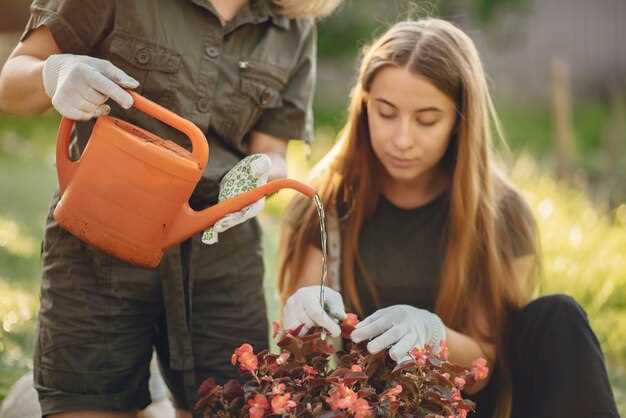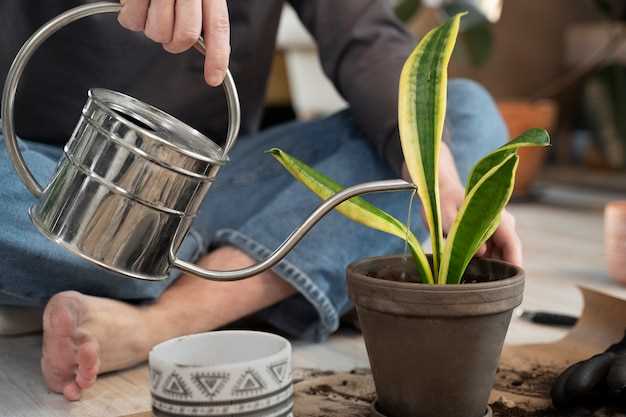

As garden enthusiasts, we all strive to create a vibrant and flourishing oasis in our outdoor spaces. However, achieving optimal plant growth requires more than just a green thumb. One crucial aspect that often goes overlooked is the art of watering. Understanding the diverse needs of different plant species and tailoring our watering techniques accordingly can make all the difference in maintaining a healthy and thriving garden.
Discovering the Secrets of Successful Plant Watering
Water, the elixir of life, plays a vital role in the growth and development of plants. However, the watering requirements of various plant types can vary significantly. Some plants thrive in moist soil, while others prefer drier conditions. By mastering the art of watering, gardeners can create an environment that caters to the specific needs of each plant, ensuring optimal growth and vitality.
Unveiling the Diversity of Plant Watering Techniques
When it comes to watering techniques, there is no one-size-fits-all approach. Different plant varieties demand different watering methods to thrive. From the delicate foliage of ferns to the succulent leaves of cacti, each plant type requires a unique watering regimen. By understanding the specific characteristics and preferences of various plant species, gardeners can tailor their watering techniques to provide the ideal moisture levels, promoting robust growth and overall plant health.
Understanding the Watering Needs of Succulents
Succulents, with their unique and captivating beauty, have become increasingly popular in gardens and indoor spaces. These plants, known for their ability to store water in their leaves and stems, require a different approach when it comes to watering. Understanding the specific watering needs of succulents is crucial for their health and overall growth.
The Importance of Proper Drainage

One key aspect of watering succulents is ensuring proper drainage. Succulents are adapted to arid environments and are prone to root rot if their roots are constantly sitting in water. Therefore, it is essential to provide them with well-draining soil and containers with drainage holes. This allows excess water to escape and prevents waterlogged conditions that can lead to the demise of these plants.
Watering Frequency and Amount
Unlike many other plant types, succulents thrive in dry conditions and have low water requirements. Overwatering can be detrimental to their health, causing root rot and other issues. It is best to water succulents infrequently but deeply. This means allowing the soil to dry out completely between waterings and then thoroughly saturating the soil when watering. The frequency of watering will depend on various factors such as the climate, season, and specific succulent species.
Remember: It is always better to underwater than to overwater succulents. These resilient plants can tolerate drought-like conditions for extended periods, but they cannot survive in waterlogged soil.
Understanding the unique watering needs of succulents is essential for their successful cultivation. By providing proper drainage and watering infrequently but deeply, you can ensure the health and longevity of these fascinating plants in your garden or indoor space.
The Art of Watering Flowering Plants: Dos and Don’ts
Mastering the delicate balance of watering flowering plants is an essential skill for any gardener. Proper watering techniques can make all the difference in the health and vitality of your blooms. In this section, we will explore the dos and don’ts of watering flowering plants, providing you with valuable insights to help you nurture your garden’s blossoms to their fullest potential.
Do:
1. Water deeply and infrequently: Instead of frequent shallow watering, it is best to water your flowering plants deeply, allowing the water to penetrate the root zone. This encourages the roots to grow deeper, resulting in stronger and more resilient plants.
2. Water in the morning: Watering your flowering plants in the morning allows the foliage to dry out during the day, reducing the risk of fungal diseases. It also ensures that the plants have ample moisture to withstand the heat of the day.
3. Use a watering can or drip irrigation: When watering your flowering plants, opt for a watering can or drip irrigation system. This allows for precise and targeted watering, minimizing water waste and ensuring that the water reaches the roots where it is needed most.
4. Monitor soil moisture: Regularly check the moisture level of the soil around your flowering plants. Stick your finger into the soil up to the second knuckle – if it feels dry at that depth, it’s time to water. If it feels moist, hold off on watering until it dries out a bit.
Don’t:
1. Overwater: Overwatering is one of the most common mistakes gardeners make when caring for flowering plants. It can lead to root rot, nutrient leaching, and the development of fungal diseases. Avoid the temptation to water too frequently, and instead, focus on providing deep watering sessions when necessary.
2. Water from above: Avoid watering your flowering plants from above, especially the foliage and flowers. Wet leaves and flowers can be more susceptible to diseases and can also lead to sunburn or scorching when exposed to direct sunlight.
3. Water at night: Watering your flowering plants at night can create a damp environment that promotes the growth of fungal diseases. It is best to water in the morning, allowing the plants to dry out during the day.
4. Neglect drainage: Adequate drainage is crucial for the health of flowering plants. Ensure that your pots or garden beds have proper drainage holes to prevent water from pooling around the roots, which can lead to root rot and other issues.
By following these dos and avoiding the don’ts, you can become a master of the art of watering flowering plants. Your garden will thrive with vibrant and healthy blooms, creating a stunning display for all to enjoy.
Watering Techniques for Leafy Greens: Promoting Healthy Growth
Ensuring the optimal growth and development of leafy greens in your garden requires careful attention to their watering needs. By implementing effective watering strategies, you can promote healthy growth and maximize the yield of these nutritious plants.
1. Moisture Management: Leafy greens thrive in consistently moist soil, but it is crucial to avoid overwatering, as it can lead to root rot and other diseases. Regularly check the moisture level of the soil by inserting your finger into the ground. If it feels dry up to the first knuckle, it’s time to water. However, if it feels moist, hold off on watering to prevent waterlogging.
2. Watering Frequency: Leafy greens generally require frequent watering due to their shallow root systems. Aim to water them every 1-2 days, depending on the weather conditions and the moisture retention capacity of your soil. During hot and dry periods, you may need to water more often to prevent wilting.
3. Watering Methods: To ensure even distribution of water and prevent damage to the delicate leaves, opt for gentle watering techniques. Drip irrigation or a soaker hose are ideal choices, as they deliver water directly to the soil without wetting the foliage. If using a watering can or hose, adjust the flow to a gentle spray to minimize the risk of water splashing onto the leaves.
4. Morning Watering: It is best to water leafy greens in the early morning to allow sufficient time for the foliage to dry before nightfall. Moist leaves during the night can create a favorable environment for fungal diseases. Additionally, watering in the morning ensures that the plants have ample moisture to withstand the heat of the day.
5. Mulching: Applying a layer of organic mulch around your leafy greens can help retain moisture in the soil and reduce evaporation. Mulch also acts as a barrier, preventing weed growth and maintaining a more stable soil temperature. Choose mulch materials such as straw, shredded leaves, or grass clippings and apply a layer of around 2-3 inches thick.
By following these watering techniques, you can provide your leafy greens with the optimal moisture levels they need for healthy growth. Remember to monitor the soil moisture regularly and adjust your watering schedule accordingly to ensure the best results.
Caring for Fruit Trees: Watering Tips for Optimal Harvest
Ensuring the health and productivity of your fruit trees requires proper care and attention, particularly when it comes to watering. By implementing effective watering strategies, you can maximize the quality and quantity of your harvest. In this section, we will explore essential tips for watering fruit trees to achieve optimal results.
One of the key factors to consider when watering fruit trees is understanding their specific water requirements. Different fruit tree varieties have varying needs, and it is crucial to tailor your watering approach accordingly. Some fruit trees, such as citrus trees, prefer consistently moist soil, while others, like apple trees, thrive in slightly drier conditions. By familiarizing yourself with the specific needs of your fruit trees, you can provide them with the ideal amount of water.
Timing is another crucial aspect of watering fruit trees. It is important to water your trees at the right time of day to ensure maximum absorption and minimize water loss. Early morning or late afternoon is generally the best time to water, as the temperatures are cooler, reducing evaporation. Avoid watering during the hottest part of the day, as this can lead to water wastage and potential damage to the trees.
When it comes to the actual watering process, it is important to provide deep and thorough irrigation. Fruit tree roots tend to grow deep into the soil, so surface watering may not reach the entire root system. Instead, use techniques such as drip irrigation or soaker hoses to deliver water directly to the roots. This ensures that the water reaches the areas where it is needed most, promoting healthy growth and development.
Monitoring the moisture levels of the soil is crucial for effective fruit tree watering. Regularly check the soil moisture by inserting your finger or a moisture meter into the soil. If the soil feels dry to the touch, it is time to water. However, be cautious not to overwater, as this can lead to root rot and other issues. Striking the right balance is key to maintaining the health of your fruit trees.
| Watering Tips for Fruit Trees: |
|---|
| Understand the specific water requirements of your fruit trees. |
| Water your trees in the early morning or late afternoon to minimize water loss. |
| Use techniques such as drip irrigation or soaker hoses to ensure deep and thorough watering. |
| Regularly monitor the moisture levels of the soil to determine when to water. |
By following these watering tips, you can provide your fruit trees with the optimal conditions for growth and development, leading to a bountiful and delicious harvest.
Watering Strategies for Herbs: Enhancing Flavor and Aroma
When it comes to cultivating herbs, proper watering techniques play a crucial role in enhancing their flavor and aroma. Understanding the specific watering needs of different herb varieties is essential for maintaining their health and maximizing their culinary potential.
1. Assessing Herb Watering Requirements
Each herb has its own unique water requirements, and it is important to assess these needs before establishing a watering routine. Some herbs, such as rosemary and thyme, prefer drier soil conditions and can tolerate periods of drought. On the other hand, basil and parsley thrive in consistently moist soil. By understanding the specific water preferences of your herbs, you can ensure that they receive the optimal amount of moisture.
2. Watering Techniques for Herbs
When it comes to watering herbs, it is important to strike a balance between providing enough moisture and avoiding overwatering, which can lead to root rot and other issues. One effective technique is to water herbs deeply but infrequently. This encourages the development of deep root systems, making the plants more resilient and better able to withstand dry periods.
Another useful strategy is to water herbs at the base of the plant, rather than overhead. This helps prevent the foliage from getting wet, reducing the risk of fungal diseases. Additionally, using a watering can or a drip irrigation system allows for precise watering, ensuring that the water reaches the roots without wasting it on the surrounding soil.
| Herb | Watering Frequency | Soil Moisture Level |
|---|---|---|
| Rosemary | Once every 1-2 weeks | Dry to slightly moist |
| Basil | Every 2-3 days | Consistently moist |
| Thyme | Once every 1-2 weeks | Dry to slightly moist |
| Parsley | Every 1-2 days | Consistently moist |
By following these watering strategies and tailoring them to the specific needs of your herbs, you can ensure that they thrive and provide you with a bountiful harvest of flavorful and aromatic leaves.
Watering Techniques for Indoor Plants: Creating a Green Oasis
Creating a lush and vibrant indoor garden is a dream for many plant enthusiasts. To achieve this, it is essential to master the art of watering your indoor plants effectively. By understanding the unique needs of different plant species and implementing appropriate watering techniques, you can create a green oasis within the comfort of your own home.
Understanding the Watering Needs of Indoor Plants

Indoor plants come in various shapes, sizes, and species, each with its own specific watering requirements. Some plants prefer moist soil, while others thrive in drier conditions. It is crucial to familiarize yourself with the specific needs of your indoor plants to ensure their optimal growth and health.
When determining the watering needs of your indoor plants, factors such as the plant’s natural habitat, its growth stage, and the type of pot it is planted in should be taken into consideration. These factors will help you establish a watering routine that caters to the unique needs of each plant, promoting their overall well-being.
Implementing Effective Watering Techniques
Once you have a clear understanding of your indoor plants’ watering needs, it is time to implement effective watering techniques. One common technique is the “soak and dry” method, where you thoroughly water the plant until water drains out from the bottom of the pot. Allow the soil to dry out before watering again, as overwatering can lead to root rot and other issues.
Another technique is the “bottom watering” method, particularly suitable for plants with delicate foliage or those prone to fungal diseases. In this method, you place the pot in a tray filled with water and allow the plant to absorb water through the drainage holes at the bottom. This technique ensures that the plant receives adequate moisture while minimizing the risk of waterlogging.
Additionally, using a well-draining potting mix and ensuring proper drainage in your pots is crucial for maintaining healthy indoor plants. This allows excess water to escape, preventing waterlogged roots and potential damage to the plant.
Remember to monitor your indoor plants regularly and adjust your watering routine as needed. Factors such as temperature, humidity levels, and seasonal changes can affect the watering requirements of your plants. By staying attentive and responsive to their needs, you can create a green oasis filled with thriving indoor plants.





